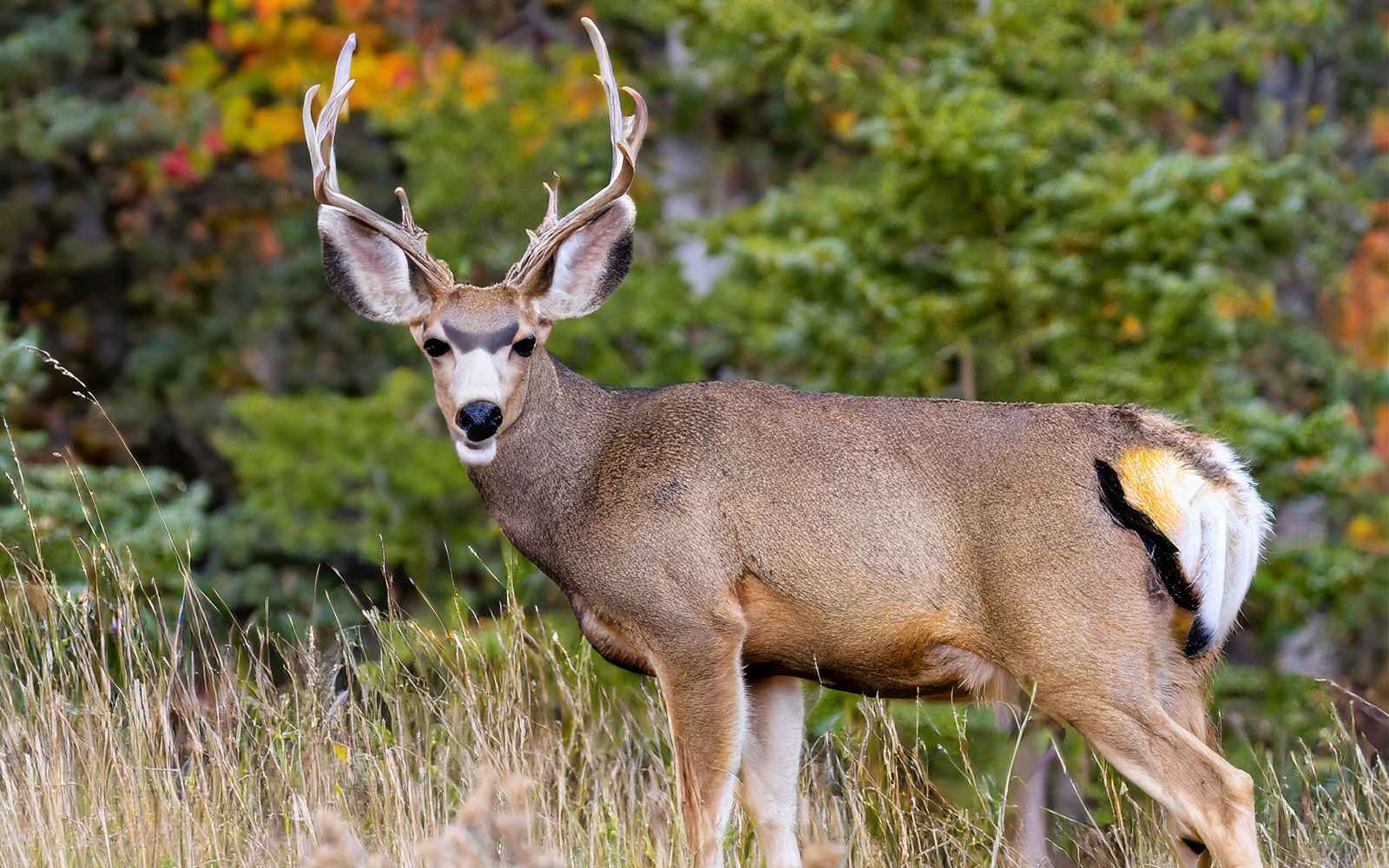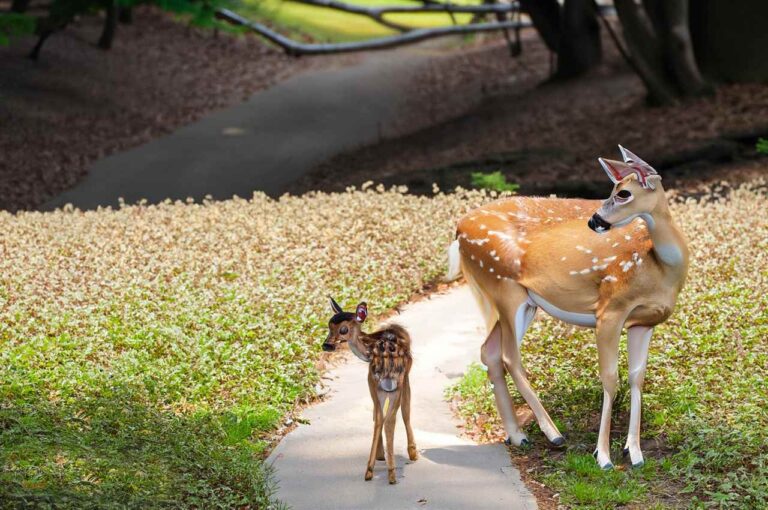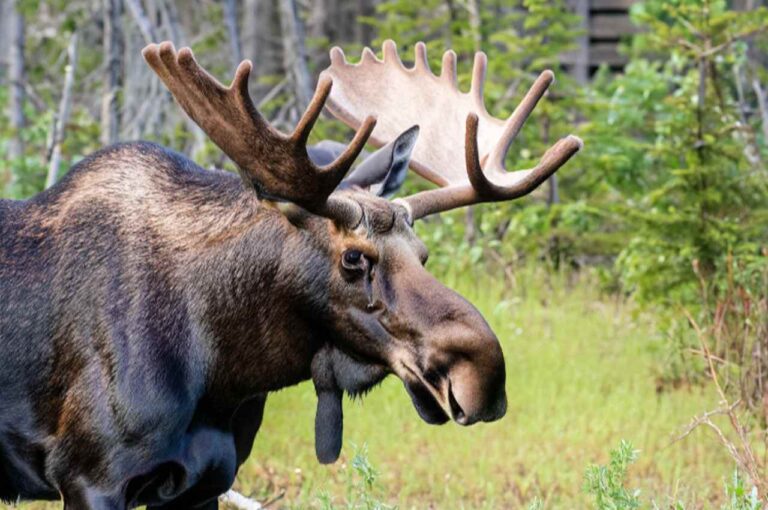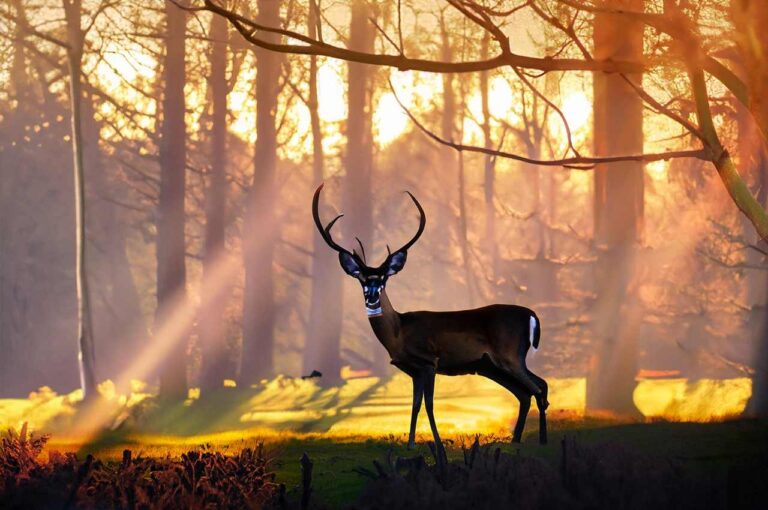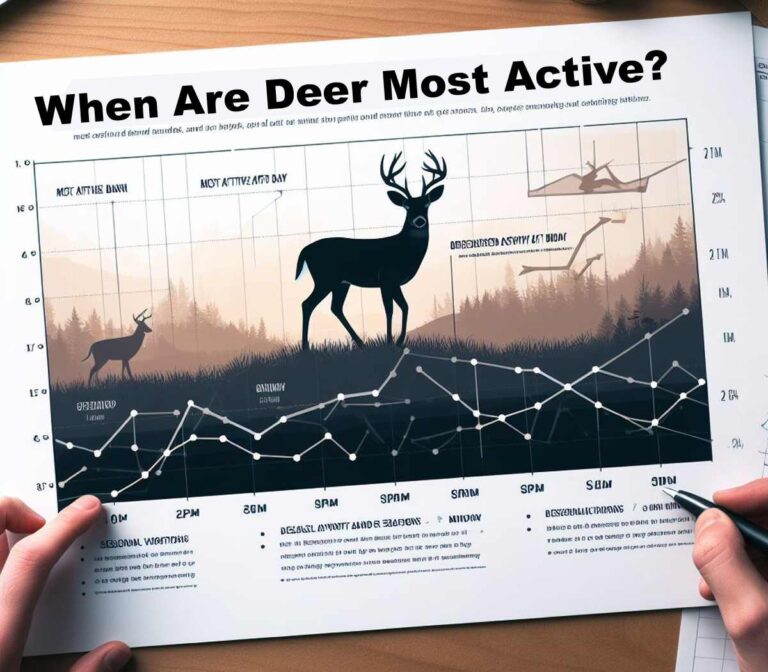How Long Does Mule Deer Rut Last? Fascinating 4-Week Journey: Here’s What to Expect!
Observing how long does mule deer rut last provides valuable insights into the complex social structures within the species. A fascinating yearly natural occurrence in North America’s Western areas is the rutting of the mule deer. For these magnificent animals, the rut is an important time because it signals the end of the reproductive cycle and the beginning of the following generation.
The timing and length of this reproductive event are significantly influenced by several variables, including photoperiod and temperature fluctuations.
The Duration of Mule Deer Rut
Normally, the mule deer rut lasts 3 to 4 weeks. The latitude, height, and weather all have a role in the precise time of the rut. In general, the rut starts in southern latitudes in mid-November or early December and in northern latitudes in late October or early November. Mid-November to early December is often when the rut peaks.
Bucks are more active throughout the day and are more intent on reproducing during the rut. They will travel great distances in pursuit of does, and they often fight other bucks in sparring contests. A doe will enter estrus (heat) for roughly 24 to 48 hours. They will be open to breeding at this time.
Bucks usually lose a large amount of weight and become less energetic after the rut. They will concentrate on breaking out of the rut and won’t reproduce until the next year.
The following are some of the crucial stages of the mule deer rut:
- Pre-rut (late September to early October): During the pre-rut, bucks start to become more active and begin antler-rubbing to identify their territory.
- Early rut (mid-October to early November): During the early rut, bucks start chasing does and become more noisy. Fighting among bucks becomes increasingly typical.
- Peak rut (mid-November to early December): During the peak of the rut, buck activity is at its highest, and they will breed does who are in estrus.
- Post-rut (late December to early January): Bucks will concentrate on healing since they are worn out from the rut. They will slow down their activity and wait until the next year to reproduce.
The Biology of Mule Deer: An Overview of Their Reproductive Cycle
Mule deer’s complex reproductive cycle is regulated by a number of hormones and environmental elements. These magnificent creatures normally give birth once a year, with the breeding season taking place in the fall. Male mule deer, sometimes known as bucks, go through major physiological changes during this period to get ready for mating.
The start of the rut, which is brought on by the shortening of the day, marks the beginning of the mule deer’s reproductive cycle. Males’ testosterone levels rise at this time, which causes the antlers to develop and become harder. Bucks act aggressively during the rut to demonstrate their reproductive fitness, including dominance displays and vocalizations. Female mule deer, often known as does, undergo hormonal changes at the same time that prepare their bodies for reproduction. Estrus, a receptive phase during which pheromones that indicate readiness for mate-seeking are released along with increased vaginal secretions, is reached.
Factors Influencing the Timing and Duration of the Mule Deer Rut
The time and length of the mule deer rut are influenced by a variety of variables, many of which play important roles. The photoperiod, or length of daylight throughout the day, is one important component. Mule deer undergo hormonal changes when the days become shorter in the late summer and early autumn, which marks the start of the rut. This biological reaction makes sure that the rut happens when the environment is most conducive to mule deer reproduction, such as when there are plenty of food sources and the weather is ideal.
| Factor | Impact on Reproduction |
|---|---|
| Predation Levels | High predation can reduce fawn survival rates. |
| Habitat Quality | Suitable habitat supports healthier does and fawns. |
| Population Density | Overcrowding can lead to competition for resources. |
| Climate Conditions | Harsh climates can impact fawn survival and reproductive health. |
Age has a significant impact on the time and length of the mule deer rut in addition to the photoperiod. Although some male mule deer may develop sooner or later, sexual maturation in males generally occurs at roughly two and a half years of age. As a result, young bucks may not have completely acquired the physical traits or abilities needed to effectively compete for mates during the rut. when a consequence, when the various age cohorts engage in the mating season, they may display rutting behaviors later than older bucks, resulting in a lengthier rutting time. Meanwhile, subordinate bucks prefer to follow the direction of dominating males, who are often older and more experienced. The time and length of the mule deer rut may also be affected by their hierarchical behavior, as inferior males may postpone or reduce their rutting actions in order to avoid direct conflict with dominant individuals.
Mule Deer Rutting Season by Geographic Location
| Region | Rutting Season Period |
|---|---|
| Northern Rockies | Late September to early November |
| Great Plains | Mid-October to late November |
| Southwest | Late October to early December |
| Pacific Coast | November to January |
Mule Deer Rutting Behavior: The Role of Dominance and Competition
The intriguing natural phenomena of mule deer rutting behavior is influenced by the roles of dominance and competition within the species. Male mule deer fight fiercely to assert dominance and mating rights during the rutting season, which usually takes place in the autumn. The main factor behind this behavior is an increase in testosterone levels at this period, which causes an increase in hostility and territoriality.
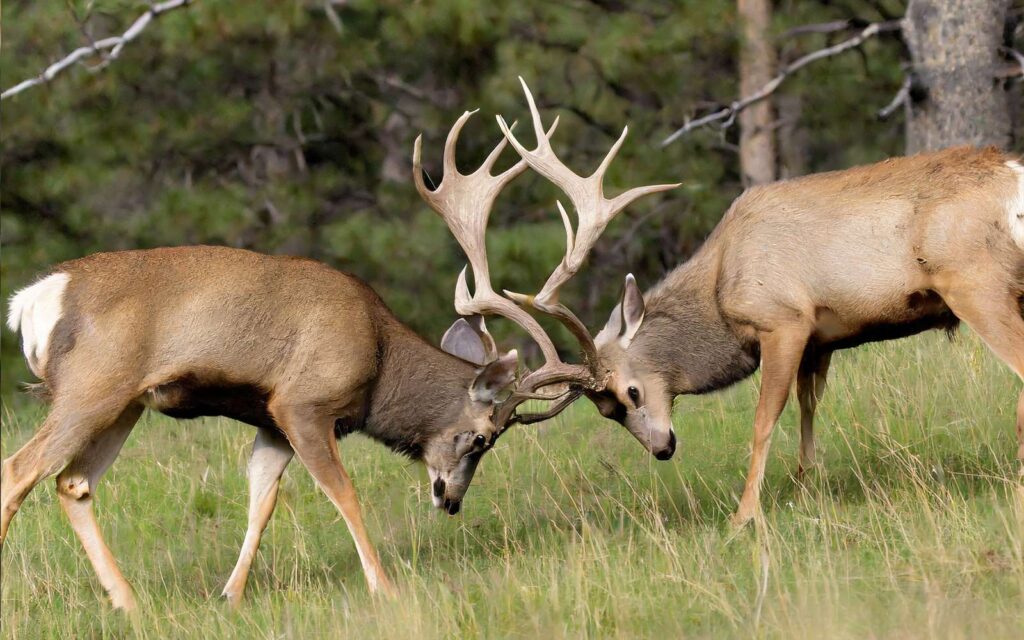
Which males are able to mate with receptive females depends critically on dominance. In comparison to their less dominating colleagues, the most dominant bucks, sometimes known as “alpha males,” have a better chance of successfully competing for mates. These dominant males engage in a variety of activities to show that they are in charge, including as vocalizing, posing, and being physical with other males. Mule deer have a dominance hierarchy that gives the strongest and most genetically superior males the chance to pass on their genes to the next generation.
Characteristics of Mule Deer Rutting Behavior
| Behavior | Description |
|---|---|
| Parallel Walking | Bucks and does walk side by side during courtship. |
| Neck Wrestling | Bucks engage in non-aggressive wrestling, establishing dominance. |
| Sniffing | Does use scent to evaluate the suitability of potential mates. |
| Vocalization | Bucks use bugling to assert dominance and attract does. |
Rutting Season: How Mule Deer Communication Plays a Vital Role
Communication during Rutting Season:
- During the rutting season, mule deer use vocalizations and body language to communicate.
- Intentions are communicated, dominance is established, and possible mates are drawn in by vocalizations and visual displays.
Vocalization in the bugling:
- Male mule deer make a distinctive and loud sound called bugling to show their authority and indicate that they are ready for a mating.
- Males use bugling as a means of communication to inform one another of their location and condition.
Visual Displays’ Function:
- Mule deer put on visual demonstrations like neck posturing and antler wrestling to establish male leadership.
- During the rut, these displays are also utilized to catch the eye of females.
Timing and duration effects
- The height of the rut is when mule deer vocalize the most, signaling intense rivalry for mates.
- Males may announce their availability and dissuade rival males by timing their vocalizations.
The Value of Vocalization Duration:
- The length and intensity of a male’s bugling might indicate his strength, vigor, and general suitability as a mate.
- The length of the male’s vocalizations is a sign of his genetic fitness and mate-suitability.
Visual Displays’ Importance
- Males may establish dominance and draw in receptive females by engaging in antler wrestling and posturing.
- These behaviors emphasize the suitability and attractiveness of males as possible partners during the rut.
Mule Deer Mating Techniques: Understanding Courtship and Mate Selection
Mule deer mating behaviors are exciting to research because they provide important insights into courting behavior and mate choice. Male mule deer participate in a range of actions during the rutting season, which normally takes place in the autumn, to entice and compete for females. Male deer have been found to establish dominance via aggressive displays and posturing as a frequent mating tactic.
Female mule deer actively participate in the process of choosing a mate. They are renowned for being quite picky, often selecting males based on their physical health and antler size. According to research, females may consider a man’s power and social standing before choosing him. The genetic quality of the mule deer population has improved overall as a result of this selection behavior, which makes certain that only the healthiest and most genetically suited males are successful in passing on their genes.
Overall, an understanding of the mating strategies of mule deer provides valuable insights into the complex dynamics of courtship and mate selection in the animal kingdom. Researchers may better understand the complex processes that underlie reproductive success in this magnificent species by examining these behaviors. The preservation and conservation efforts targeted at preserving healthy mule deer populations and their distinctive mating behaviors for future generations would benefit from further study in this sector.
Frequently Asked Questions
What is the reproductive cycle of mule deer?
Mule deer have a rutting season when mating takes place, which is followed by a gestation period and the delivery of fawns.
What factors influence the timing and duration of the mule deer rut?
The photoperiod, weather, and the accessibility of resources like food and water, as well as their availability, all have an impact on the time and length of the mule deer rut.
What is the role of dominance and competition in mule deer rutting behavior?
Mule deer rutting behavior is significantly influenced by rivalry and dominance. To entice and mate with females, dominant males build their territories and exhibit aggressive behaviors.
How does mule deer communication play a vital role during the rutting season?
During the rutting season, mule deer interact with one another using a variety of vocalizations, visual displays, and scent marking. Individuals use this communication to establish dominance, attract mates, and settle disputes.
What are the insights into courtship and mate selection in mule deer?
Mule deer courtship includes actions including parallel walking, neck-wrestling, and smelling. Female preference has an impact on mate choice, with females often preferring powerful, healthy males.
- Wyoming Deer Season 2025-2026 New Schedule & Rules - 15 September 2025
- Wisconsin Deer Season 2025-2026: WI Deer Hunting Guide [Schedule, Rules, Licenses] - 15 September 2025
- West Virginia Deer Season 2025-2026 Complete Date & Guide - 15 September 2025
